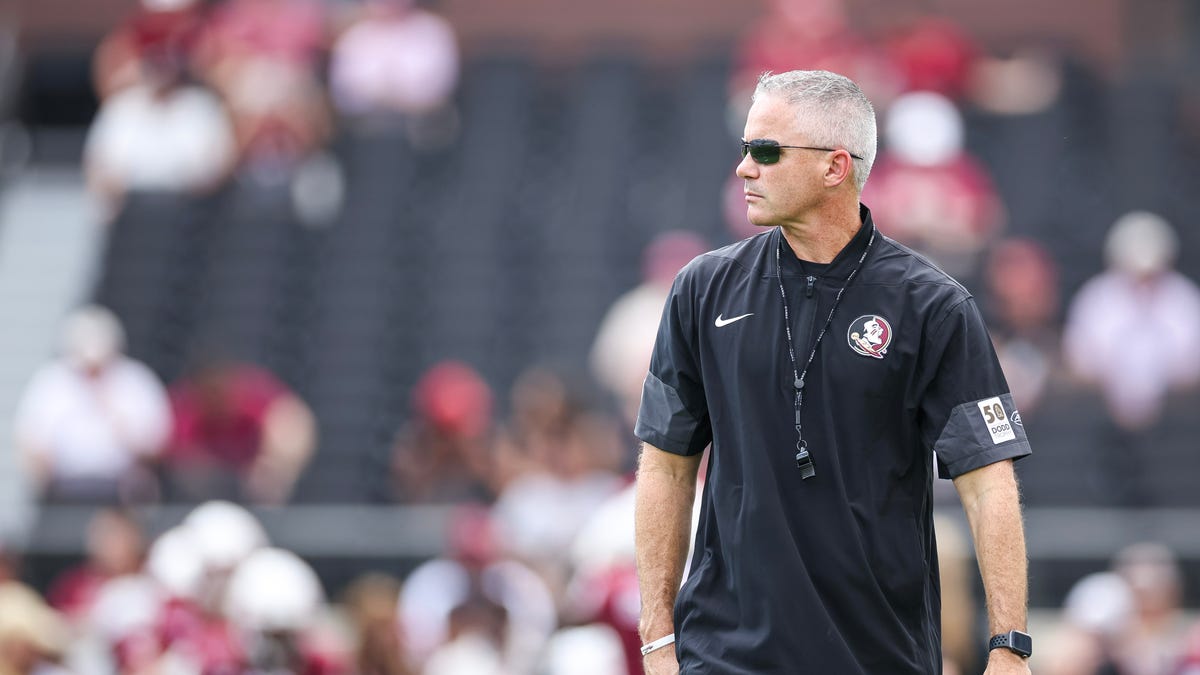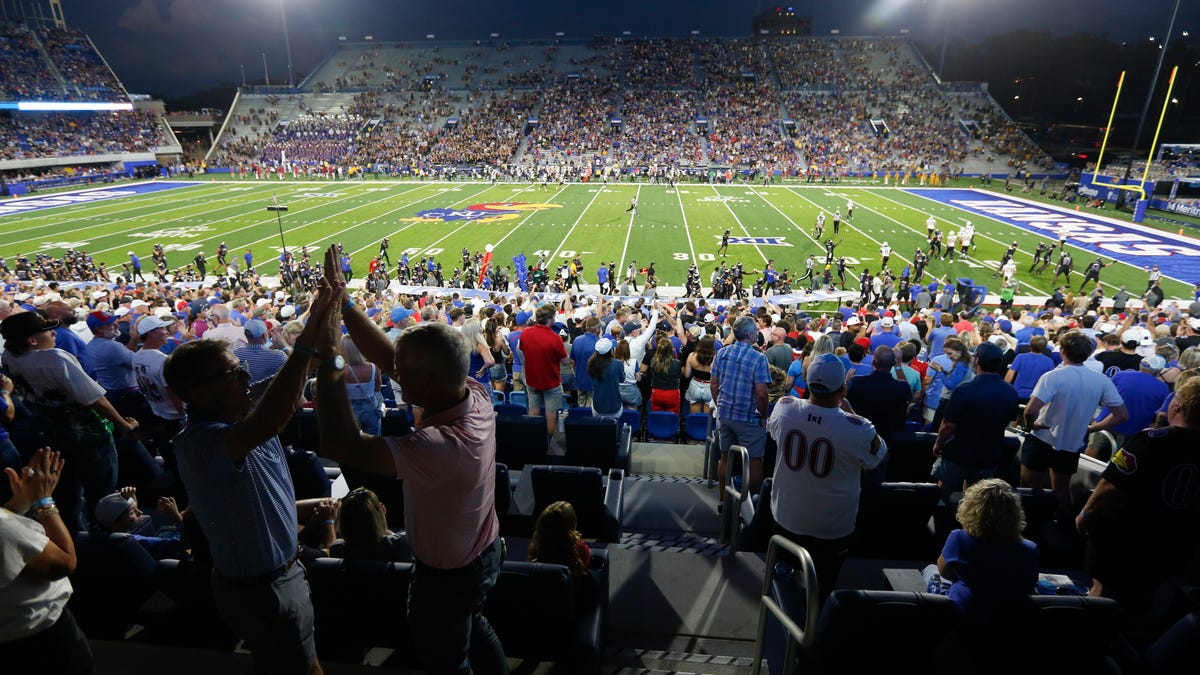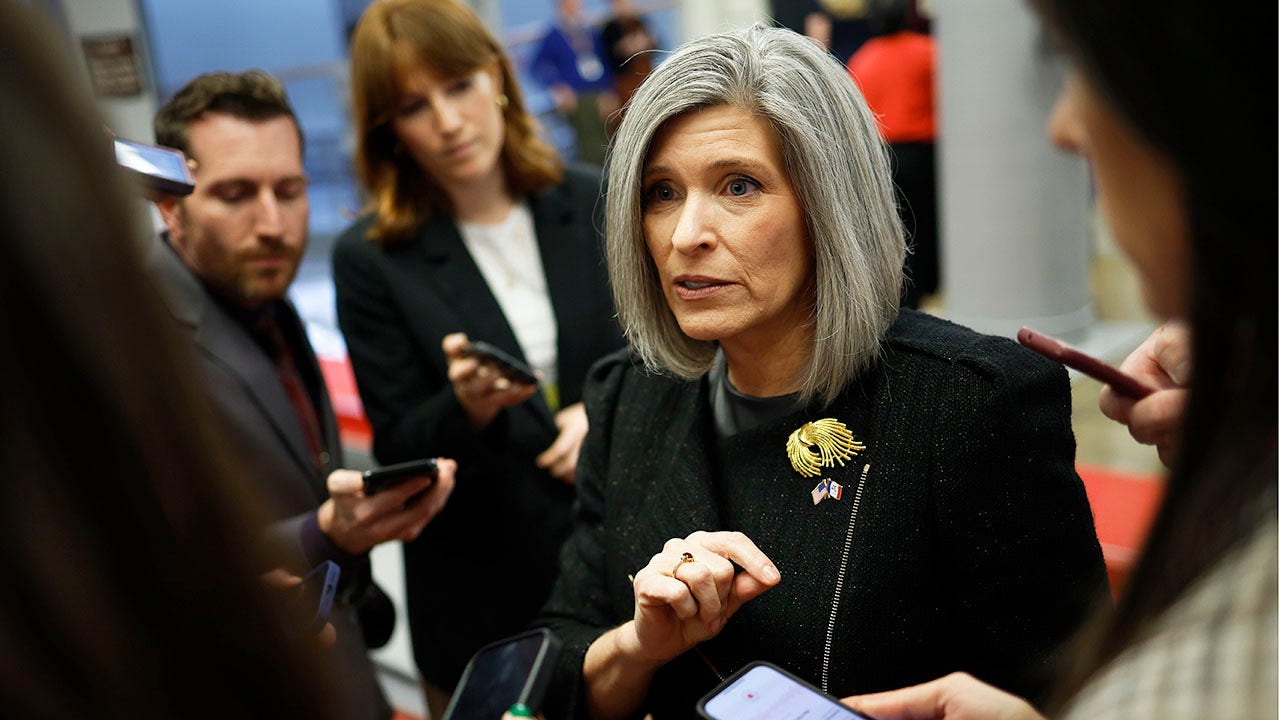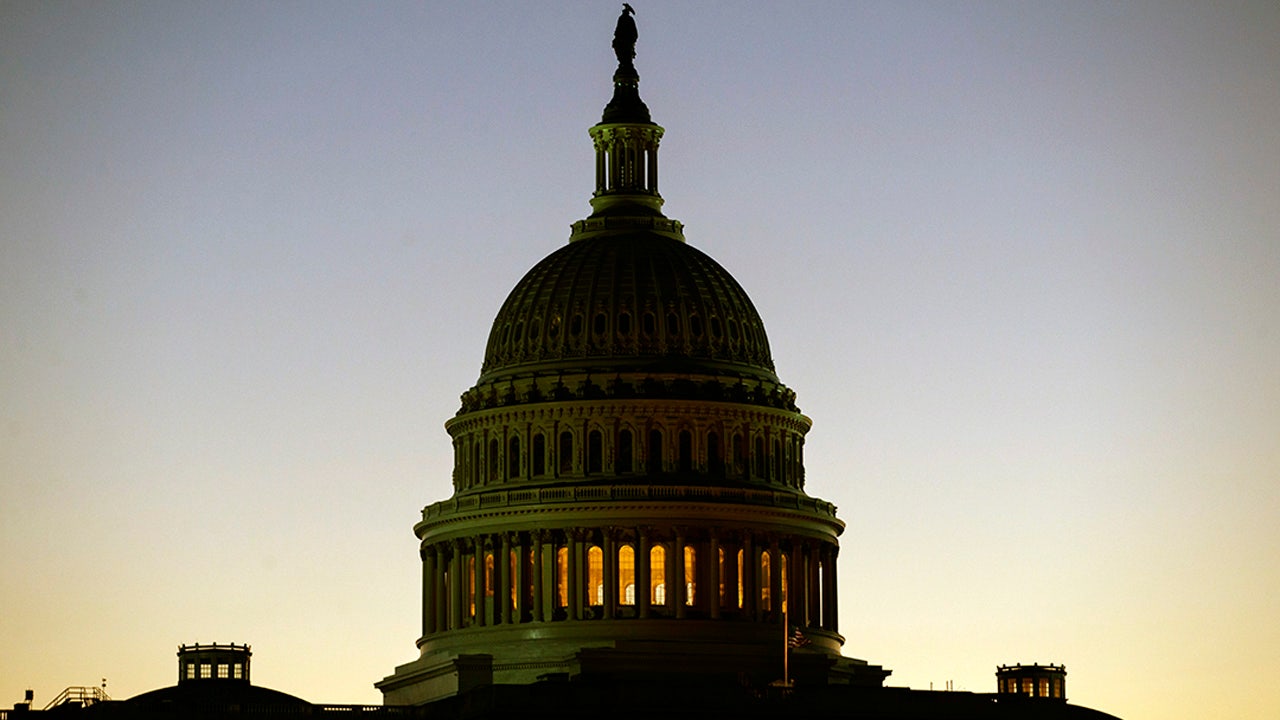Indiana
Doyel: ‘The thrill of hope’ is what Indiana Wish gives to Hoosier families, like Archer’s

Kabuki Syndrome: Indiana Wish provided Archer Ruzic with a playground
Archer Ruzic, who has been diagnosed with more than 20 illnesses and conditions, giggles
Archer Ruzic giggles like a baby lamb, bleating gently, beautifully, as his dad loves on him in the kitchen of the family’s westside home. Archer is 4 years old and nonverbal, generally silent when he’s not crying in pain or, as he’s doing now, giggling softly. This is one of those moments for Jesse and Olivia Ruzic, that giggle, when everything feels OK – the hospital trips and seizures, the heart surgeries, the medications lined up on the counter like they live inside Walgreens.
That was another moment when everything felt OK – a trip to Walgreens.
This was in Michigan, four years ago, after one of Archer’s surgeries, the insertion of a feeding tube into his stomach. Archer was 6 months old and couldn’t eat by mouth – still can’t, really – and was being fed through a nasal tube. His waving little hands had discovered the nasal tube one day, and “pulling it out was becoming his favorite hobby.”
That’s from Olivia, the kind of delightful thing she or Jesse will say about their son, about their situation. Their strength is supernatural, coming from their faith. They met in 2012 at a seminary in Chicago, when Olivia tripped and … well, we’ll tell that story in a moment. By March 2020 they were married and living in Michigan, where Jesse was a pastor and Olivia worked alongside him, when the trip to Walgreens happened.
Archer was in the hospital after something had gone wrong following the insertion of that feeding tube. He suffered a stroke, and doctors told his parents – well, you can imagine what they told his parents.
“They thought he might die,” Olivia says.
Olivia and Jesse prayed, and Olivia posted an update on Facebook asking – begging – for more prayers.
“People all over the globe prayed for him,” she says.
This was a viral social media post that crossed oceans and came back to Michigan, to a Walgreens, where Olivia was getting medication for Archer when a woman approached her:
“Are you Archer’s mom?” she asked Olivia. “I’m praying for him.”
These are the moments that sustain a mom and dad when their son, their sweet little Archer, has been diagnosed with so many illnesses and conditions – more than 20, many of them unrelated – that eight of his 11 organ systems are affected. The family needs more moments, though. It’s why they called Indiana Wish last year. They were seeking help. They wanted to hear more of that glorious giggle.
Olivia Ruzic, 32, tries to explain what it’s like to raise a child like Archer. She goes old school, to the 1985 video game Tetris. Remember that one? Trying to put the blocks together, just so?
“Rare-disease parenting feels like a game of Tetris, and it’s impossible to win,” she says. “You’re constantly trying to fit together blocks that just won’t: How does this medicine that helps one organ system affect another organ? We’re so consumed with medical issues, are we neglecting developmental issues? We have two other kids – are we neglecting them? You always ask: ‘Am I doing enough?’
“Working with Indiana Wish was such a beautiful experience. They posed a beautiful question: What wish would bring your child the most joy?”
Olivia pauses.
“Indiana Wish put the most blocks together for him.”
Indiana Wish serves all year
This is an annual story you’re reading, the second such installment of our holiday Indiana Wish series. It started last year with a story about a wish granted in 2019 to Muncie’s Lauren McGlaughlin: a family trip to France, her idea, for memories that would sustain Lauren’s parents and siblings after her eventual death from cancer the next year.
Some wishes are big, like that. Some are smaller. The average cost is $12,000, and Indiana Wish is a non-profit. Each wish is granted with help from community donations.
Why write this story? Why write it every year – and during the holiday season, when we’d rather laugh than cry?
Can’t tell you, exactly. It just feels right. As we come together in December, celebrating whatever we celebrate, let’s love on people whose lives don’t look like ours – and support groups like Indiana Wish, whose sole purpose is comforting families living through their unimaginable struggle.
Pause for a moment. Let’s compose ourselves. You need to learn more about Olivia and Jesse, and about Archer and his two brothers. And you need to see the wish they received.
Indiana Wish, 2023: Lauren McGlaughlin is alive in family’s memories from Muncie to Paris
Granting Archer’s wish
Archer loves the park. Well, he’d love the park if it weren’t so overwhelming. He loves the slide. Loves to swing next to his older brother, Jack, 7.
But parks tend to have other children, and the stroke Archer suffered at 6 months caused a brain bleed in his thalamus region, where sensory processing takes place. He gets overwhelmed to the point of withdrawal, lying down on a mat to get away from all that stimulus. His frustration leads to emotional agony, to say nothing of the increased risk of infection that comes with being around other small children. When Archer gets sick, he suffers more seizures. The cycle is terrifying, heartbreaking.
Archer loves the park, but parks don’t love him back. So the family wished for a park in their backyard. Nothing big: A swing set for Archer, Jack and baby brother Dash, 8 months old. A small trampoline. Like that.
Indiana Wish built an interactive playhouse with swings, a slide and cabin. Archer plays there with Jack, swinging or sliding or just hanging out inside the cabin. It’s like their own fort, just the two of them, after Jesse or Olivia help lift Archer into the cabin. He can walk short distances, but needs help climbing.
Indiana Wish also built a netted trampoline. Jesse and Archer get on it and jump together, literally together: Jesse, 34, wraps his arms around his son and they bounce up and down. They are safe, they are together, and listen carefully. Hear it?
Archer’s giggling.
Why Indy? Riley Hospital for Children
She’s from Franklin, Indiana. He’s from Washington D.C. It was at Chicago’s Moody Bible Institute where Olivia and Jesse “met,” if you can call it that. More like she was walking to class, down some stairs, and tripped. She didn’t land at the 6-2 Jesse’s feet so much as she landed on them.
“Sorry,” Olivia told the tall stranger from D.C. before hurrying away in embarrassment, “I’m just getting used to this walking thing.”
Now Jesse is yelling after her to slow down, to come back:
“I’m falling for you!” he called out.
Great line, you have to admit.
They were married, and soon had Jack. Then came Archer, and right away – like, when he wouldn’t cry after delivery – doctors knew something was wrong. Three open-heart surgeries in six months. A diagnosis of Kabuki Syndrome, a punishing genetic condition that affects the body and brain. More diagnoses: Kidney damage. Brain damage. Diaphragm in the wrong place. A muscle mutation. Epilepsy. Autism. More.
“I don’t want to go into the whole list,” says Olivia, whose family moved to Indianapolis last year to be closer to Riley Hospital for Children, “but he’s not the most acute. I know someone putting their son in hospice now. You’d be shocked at the intense level of suffering – but also the intense level of joy these children have, including my son.”
Archer loves eggs and sausage. He reads electronic books, and darned if the kid doesn’t prefer to listen in Spanish. His parents used to go into the controls when he was sleeping, and return it to English, but Archer keeps switching it back to Spanish.
Indiana Wish and ‘the thrill of hope’
At first, Archer babbled like babies do.
“He used to say ‘Mama,’” Olivia says. “We have video of him saying it once.”
Then, the stroke. He doesn’t talk anymore, but he has beautiful brown eyes and the most expressive face; he gets his point across. But there are days where it’s all too much – another seizure, more aches and frustration – and Archer will stay in his bed, irritable or worse, in pain.
Indiana Wish knew about those moments, and purchased for Archer a reclining rocking chair. The cushion is the softest material ever – like a bed of Hawaiian rolls, the family calls it – and the rocking motion can calm him down. This happened a few weeks ago:
“Archer was having one of those days,” Olivia says. “Pneumonia and a heart-wrenching seizure day, and because of that he was so exhausted he couldn’t lift his head.
“I put up a Christmas tree. He really loves lights. I could hear him screaming in his medical bed, nothing was helping him, and I had Christmas music on in the background, songs about a God who loved humanity so much He comes down and suffered for us. My whole life I’ve always believed that, but I was struggling that day. It’s so hard when you have child that has a progressive disease that causes so much pain, and you can’t fix it. I was struggling to believe God is with us.
“I took Archer out of the bed and lay him across the rocker. He was lying on those Hawaiian rolls, and at first he was visually struggling to process the tree. I started rocking him, and he sighed and stopped screaming. A faint, beautiful smile crossed his lips. Seeing him be comforted in his pain reminded me: I’m not alone, and God is with us.
“I felt the thrill of hope,” she continues. “‘A weary mom rejoices’ – it’s so true. Indiana Wish really brings hope to families. I could not be more thankful.”
They are paying it forward as best they can, Archer’s parents. Ask around, and you learn Olivia works part-time at a local grocery store, where she quietly uses her employee discount to help other weary moms with their purchases. Ask around, and you learn Jesse left the church not because he lost his passion to serve, but found a passion to serve in another way: He’s attending nursing school, and has one year left. He wants to work in the neonatal intensive care unit. The NICU is a lonely place for parents – and can be harder on the dad, often, than the mom – and Jesse wants to help.
They are one of 3,500 Indiana Wish families granted a wish since 1984. You can help by visiting www.indianawish.org.
Find IndyStar columnist Gregg Doyel on Threads, or on BlueSky and Twitter at @GreggDoyelStar, or at www.facebook.com/greggdoyelstar.
How you can help
This is the second installment of IndyStar columnist Gregg Doyel’s annual holiday series on Indiana Wish, an Indianapolis-based nonprofit that has granted more than 3,500 wishes to state children, ages 3-18, diagnosed with a life-threatening or terminal illness. The average cost of a wish is $12,000. To help support Indiana Wish, visit www.indianawish.org/donate/.
More: Join the text conversation with sports columnist Gregg Doyel for insights, reader questions and Doyel’s peeks behind the curtain.

Indiana
Are Caitlin Clark’s Air Force 1s the key to Indiana Fever’s playoff success?
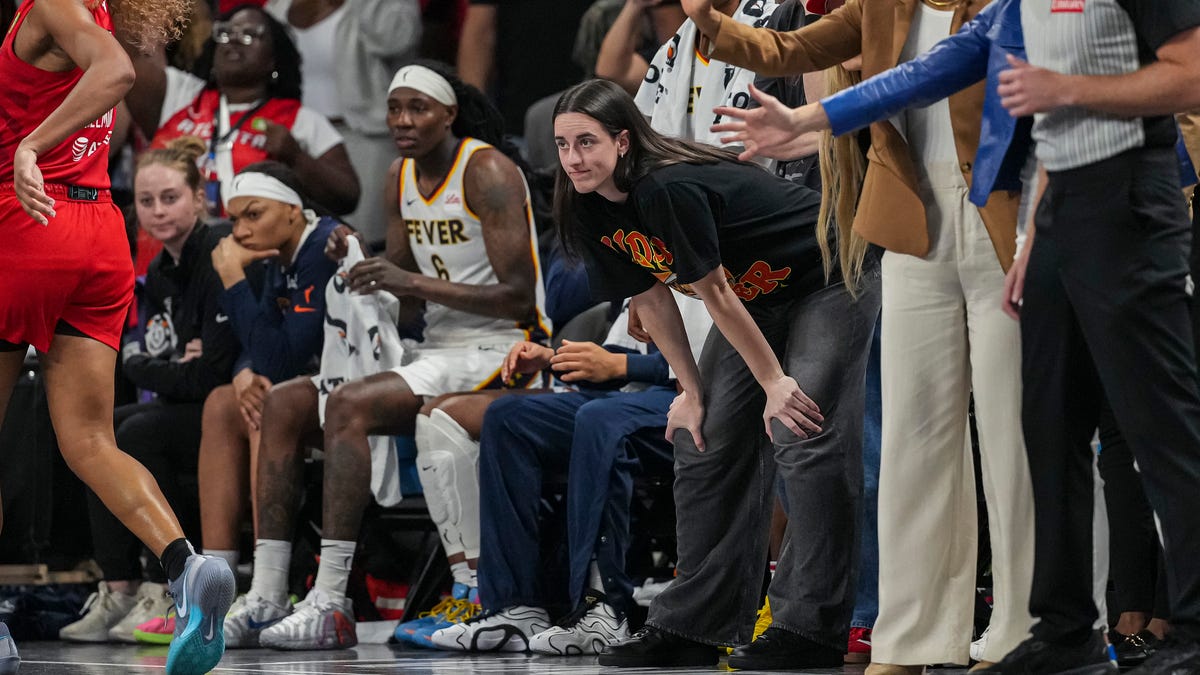
Can Fever win without Caitlin Clark?
USAT’s Meghan Hall and Sam Cardona-Norberg highlight how the Fever’s depth has shown out in the playoffs, and what it means for Indiana’s future.
Sports Seriously
Caitlin Clark may not be able to play for the Indiana Fever, but she’s clearly trying to influence her teammates with her shoe game. The All-Star guard, who is out with a right groin injury, has worn black Nike Air Force 1 sneakers for the last three games of the playoffs.
The Fever’s record in those three games: 3-0.
It started when the Fever were down 1-0 in their best-of-3 first-round series to the Atlanta Dream. She walked out on the court with the shoes, which exude toughness, and got a big reaction from teammates.
“I fear you, you mean business,” Fever All-Star center Aliyah Boston joked before Game 2. “Black Forces?! Them (refs) better watch out.”
BE LIKE CAITLIN CLARK: Buy black Air Force 1s
Ever the superstitious type, after the Fever won Game 2, Clark wore same outfit and Air Force 1s for Game 3. After the Fever upset the Dream, they celebrated the shoes on the court.
“I mean, they’re working, so,” teammate Lexie Hull said following the Game 3 win. “We told her she’s bringing them in her bag, wearing them every day.”
For Game 1 of the semifinals against the Las Vegas Aces, Clark wore black and white Nikes to the Michelob ULTRA Arena. Indiana’s Sophie Cunningham was concerned, asking about the black Air Forces. Clark said: “Don’t worry, I’ve got them.”
Clark wore all black for the game, including the Air Force 1s, and the Fever stunned the Aces to take a 1-0 lead in the best-of-5 semifinals.
Here’s guessing the black AF1s will be back for Game 2, Tuesday in Las Vegas.
The USA TODAY app gets you to the heart of the news — fast. Download for award-winning coverage, crosswords, audio storytelling, the eNewspaper and more.
Indiana
Notre Dame’s Misery Could Be Indiana’s Opportunity — Here’s Why
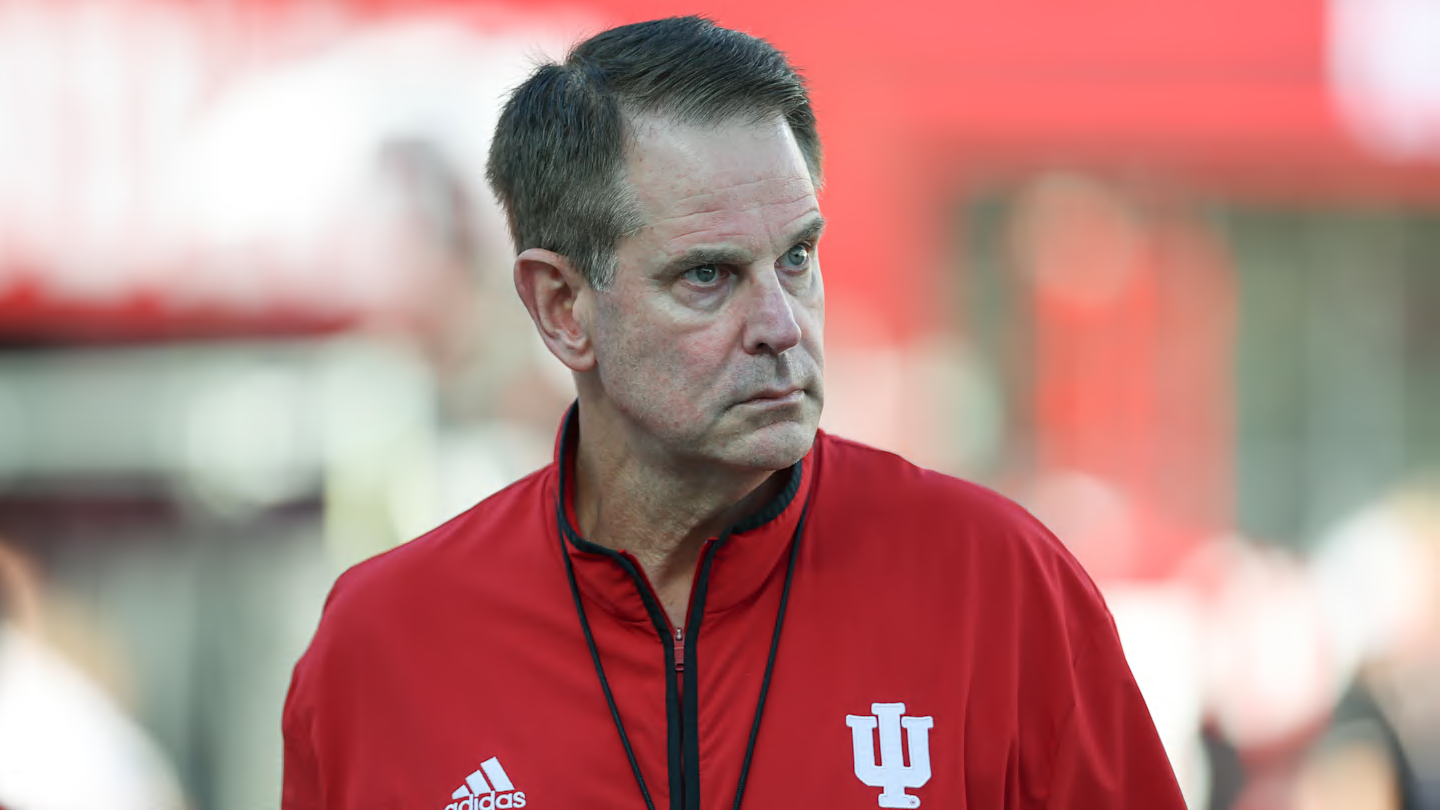
Indiana made quick of Indiana State on Friday night, routing the Sycamores 73-0. One night later, roughly 200 miles north of Bloomington, Indiana, in South Bend, Notre Dame dropped another thriller. This one was a 41-40 loss to Texas A&M that dropped the Fighting Irish to 0-2.
Aside from the obvious in Texas A&M, Indiana may have just been the biggest winner in college football because of that.
Indiana Football’s Current Setting
Indiana sits at 3-0 after Friday’s drubbing of Indiana State and is now preparing for No. 9 Illinois in one of the biggest games in the history of Memorial Stadium. Both the Hoosiers and Fighting Illini have realistic College Football Playoff hopes, and Saturday’s showdown will go a long way in determining who has a step up.
A win by Indiana Saturday would put it in the driver’s seat for a College Football Playoff spot ahead of Notre Dame, even if the Irish win out and finish 10-2.
Beating No. 9 Illinois on Saturday night would mean Indiana has a top ten win to its name, something Notre Dame is almost guaranteed to not have all year, as it sits 0-2 and only has one game remaining against a team that is currently ranked (Oct. 18 vs. No. 25 USC).
Indiana’s Remaining Schedule:
Coaches hate looking ahead and understandably so. However, we’re not coaches here, and can look ahead without getting punished for it.
Of its nine remaining games, Indiana figures to be favored in seven. Only trips to Oregon and Penn State would appear to make the Hoosiers underdogs at this point.
College football rarely goes as we expect it to far out, but what happens if Indiana simply beats the teams, it should, with Saturday’s game against Illinois included in that?
Indiana would finish 10-2 and feature a top ten win. The best Notre Dame could currently do is run the table and finish 10-2, but that would almost certainly come without a win over a top 15 team, let alone a top 10 one.
College Football Playoff Outlook:
Would the College Football Playoff committee agree? It can say it doesn’t favor brands over resumes all it wants, but sometimes the evidence is too strong against that. Notre Dame losing its two games by a combined four points only would be part of its case, but should margin of defeat even matter in CFP cases?
Indiana didn’t even play Saturday night but depending how the rest of the regular season goes, it may have just been the biggest winner in all of college football Saturday night, short of Texas A&M.
Indiana
Knicks Hope to Be in Pacers’ Shoes

The New York Knicks hope to do what the Indiana Pacers were able to accomplish this past season by winning the Eastern Conference Finals.
The Pacers stunned the Knicks in six games to advance to the NBA Finals, where they pushed the champion Oklahoma City Thunder to a Game 7 despite losing star point guard Tyrese Haliburton to a torn Achilles midway through the final matchup.
The Pacers should be different without Haliburton in the upcoming season, opening the door for the Knicks to take over as the top team in the East. Even though Haliburton won’t be on the court, the Pacers should still have a solid team.
Andrew Nembhard is expected to have significant duties as the team’s point guard while Bennedict Mathurin will likely be his partner in the backcourt.
Aaron Nesmith, who torched the Knicks throughout the entire Eastern Conference Finals, will likely be the team’s starting small forward. Pascal Siakam will be expected to lead the team in scoring from the power forward position while the team has question marks surrounding the center spot.
Myles Turner won’t be with the Pacers for the first time in a decade after he signed a contract with the division rival Milwaukee Bucks over the offseason, so the team needs to figure out what it will do to replace him.
“By far, the biggest question with the lineup is the center position. There is no guaranteed starter, although Isaiah Jackson is the favorite. Jay Huff and James Wiseman will likely back him up,” Indiana Pacers On SI contributor Ryan Stano wrote.
“There’s a chance that Indiana changes who they want to start at center at some point during the season, so that is a fluid spot. Tony Bradley will fight Wiseman for the third-string minutes.”
The Knicks should be favored over the Pacers during the season, but this is a team whose core was one win away from winning the championship just a few months ago.
Therefore, the Knicks have to take the Pacers seriously if they want to overtake them in the Eastern Conference hierarchy.
Make sure you bookmark Knicks on SI for the latest news, exclusive interviews, film breakdowns and so much more!
-

 Finance1 week ago
Finance1 week agoReimagining Finance: Derek Kudsee on Coda’s AI-Powered Future
-
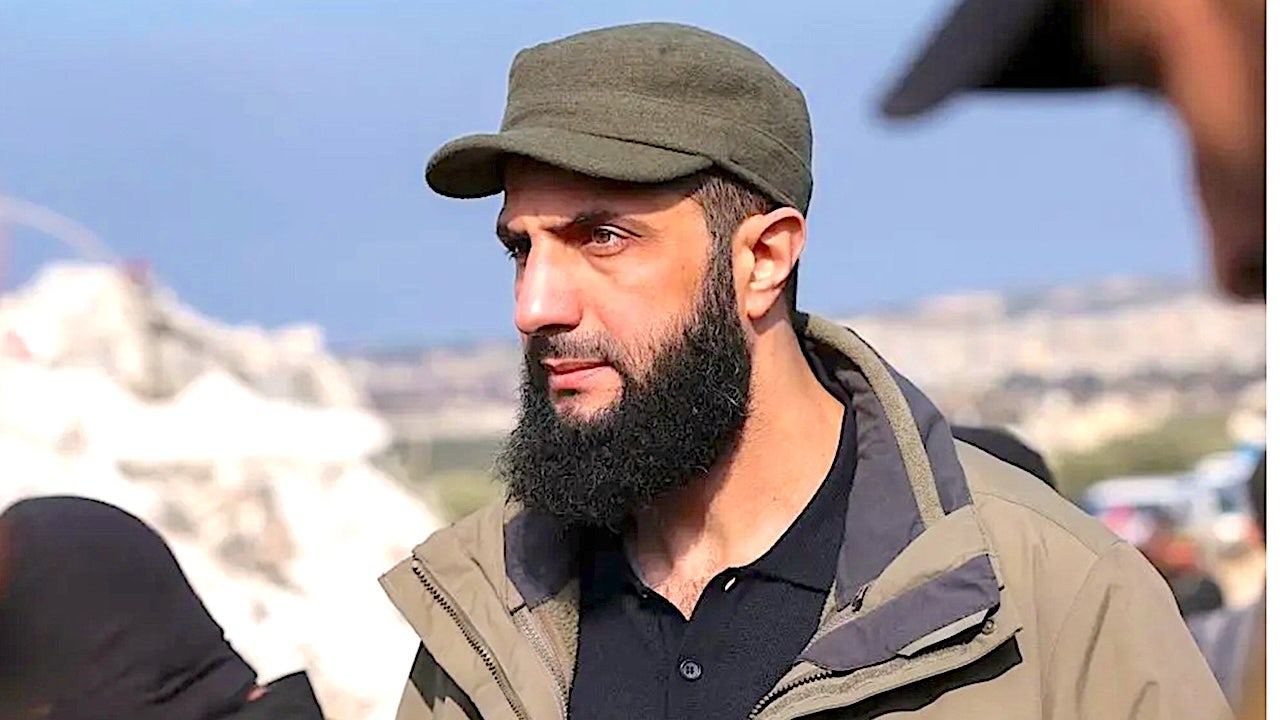
 World1 week ago
World1 week agoSyria’s new president takes center stage at UNGA as concerns linger over terrorist past
-
North Dakota1 week ago
Board approves Brent Sanford as new ‘commissioner’ of North Dakota University System
-

 Technology1 week ago
Technology1 week agoThese earbuds include a tiny wired microphone you can hold
-

 Culture1 week ago
Culture1 week agoTest Your Memory of These Classic Books for Young Readers
-

 Crypto1 week ago
Crypto1 week agoTexas brothers charged in cryptocurrency kidnapping, robbery in MN
-

 Crypto1 week ago
Crypto1 week agoEU Enforcers Arrest 5 Over €100M Cryptocurrency Scam – Law360
-

 Rhode Island1 week ago
Rhode Island1 week agoThe Ocean State’s Bond With Robert Redford
